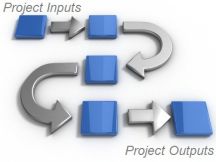
Why Manage Scope (Key Reasons)
First let’s try to imagine we manage a website development project. The scope of our project includes the boundaries, requirements, and constrains and assumptions. If to be more specific, our website project scope is defined by these items:
- Target Audience: or the customers that will pay for products/services offered by our website
- Brand: a product or service we are going to offer
- Promotion: a set of e-marketing and SEO tools and techniques to promote the website on the Web
- Design: the visual realization of the website’s concept
- Content: text and graph information our website will contain
- Technical: hosting, domain name, CMS, FTP access, website stability, and so on
If we efficiently control and manage the scope from the very beginning through the end of our project, we are likely to develop a website that is completely based on the initial requirements. However, if we fail managing it there can be some changes that cause scope creep.
For example, our customer wishes to change website design, and the current design pattern is already developed. Developing a new pattern requires more time and effort. The scope is changed, but we do not have additional time. The project then appears to be delivered out of schedule.
Failed scope management fails a project. It’s the rule you must remember. If you cannot respond to scope changes then most likely your project will be delayed and over-budgeted.
Here’re the top 3 reasons why it is essential to manage project scope:
- Reaching agreement on what is in and is not in scope. Through communicating with the sponsor, customer and other key stakeholders, the same conclusion about managing project scope should be reached. Scope should be documented and then carefully discussed during stakeholder meetings. Any issues or misunderstandings should be addressed before the project starts. When all the stakeholders agree on scope, a scope statement should be created. This document serves the basis for establishing three critical project parameters: Cost, Schedule, and Deliverable Acceptance Criteria (Quality).
- Identifying impacts to scope throughout project life-cycle. Through monitoring and reviewing the key components of the scope statement the project manager identifies what changes are made to scope and then agrees on these changes with the sponsor and customer. The challenge here is to determine how one parameter impacts on other parameters. For example: project cost is increased; will the sponsor agree upon this increase and provide additional funds? Or will the customer accept the deliverables? Any changes to scope should be logged, agreed and documented.
- Making adjustments to scope documents. Any scope-related issue should be reviewed and resolved, and then appropriate records and modifications should be made to scope documents. The project manager in cooperation with the key stakeholders needs to formalize approved scope changes with recommendations (if any). Making adjustments helps keep scope documents up-to-date and correct. It also makes the project plan effective as cost, schedule, and deliverable-acceptance criteria remain relevant.
How to Manage Scope (Key Steps)
The process of managing project scope is a series of activities or steps planned for ensuring that scope remains controllable and manageable throughout the project. The steps are:
- Setting
- Tracking
- Controlling
The first step “Setting” includes the activities for reviewing Project Charter and other essential documents (incl. contacts, SOW, benefits statement). The step aims to identify and describe the scope elements (Cost, Time, and Quality) in detail. The elements create the scope baseline that is to be reviewed and approved by the sponsor and customer.
The second step “Tracking” covers all the activities for monitoring the scope elements and reveal any changes that are made to the elements. The project manager takes responsibility for tracking and communicating scope issues to the key stakeholders. This activity is performed on a regular basis, and the manager needs to carry out weekly/bi-weekly meetings to discuss scope issues.
The final third step “Controlling” aims to process scope changes and agree on them. Controlling scope means analyzing scope changes to determine and evaluate their impact on cost, schedule and deliverable-acceptance criteria. The stakeholders review the results of the analysis and decide whether to approve or reject the changes. All approved changes should be documented. Then all related documentation (WBS, communications plan, procurement plan, staffing plan etc.) should be updated as well.